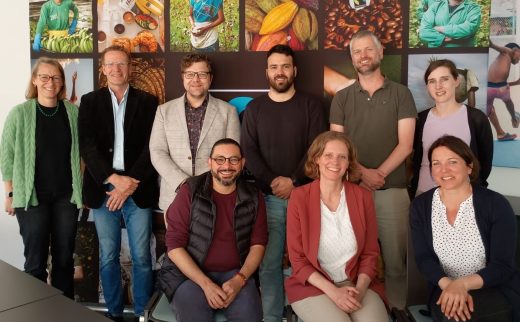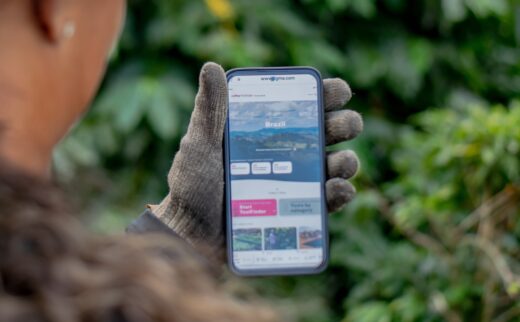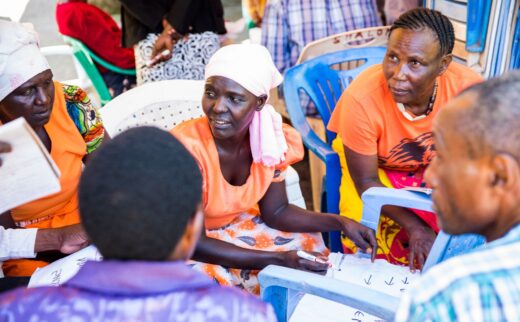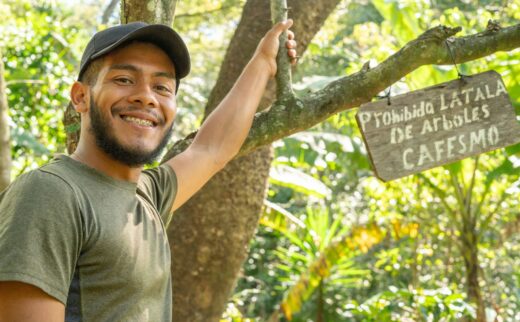coffee&climate phase III: No more talking – let’s act!
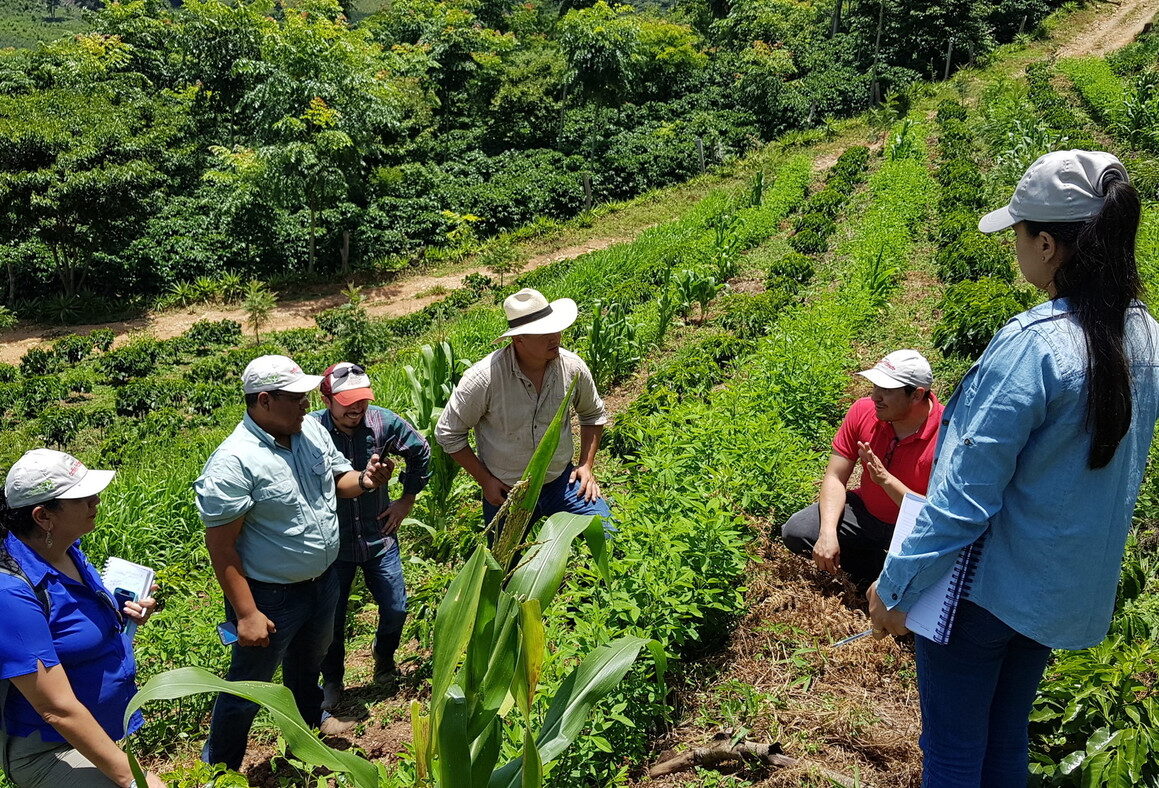
The initiative for coffee&climate (c&c) just kicked off its third phase of implementation to increase climate action in coffee production. The target is ambitious: continue to develop suitable responses to climate change and roll out knowledge on climate-smart agriculture in six coffee producing regions. The key to achieving this is strong partnerships and cooperation throughout the coffee sector.
A unique pre-competitive initiative
“The whole situation is so complex, that we can only solve it together”, says Michael Opitz, Managing Director at the German Hanns R. Neumann Stiftung (HRNS) – the implementing partner of c&c, “that is why the initiative for coffee&climate is a unique pre-competitive initiative, coffee companies and development organisations who wish to build a climate-smart coffee sector are welcome to join.”
More than 10 years of experiences
coffee&climate was founded in 2010 by International Coffee Partners (ICP), also a pre-competitive partnership of eight committed family-owned European coffee companies. c&c projects are coordinated and implemented by HRNS.
c&c supports smallholder coffee farmers and their communities in tackling the effects of climate change on coffee production.
“We have identified problems, analyzed literature and research, identified climate trends in other countries and developed ideas for improving our production system”, says Opitz, “But as ambitious as we are, we can only do our own small part. That’s why we need fellow collaborators.”
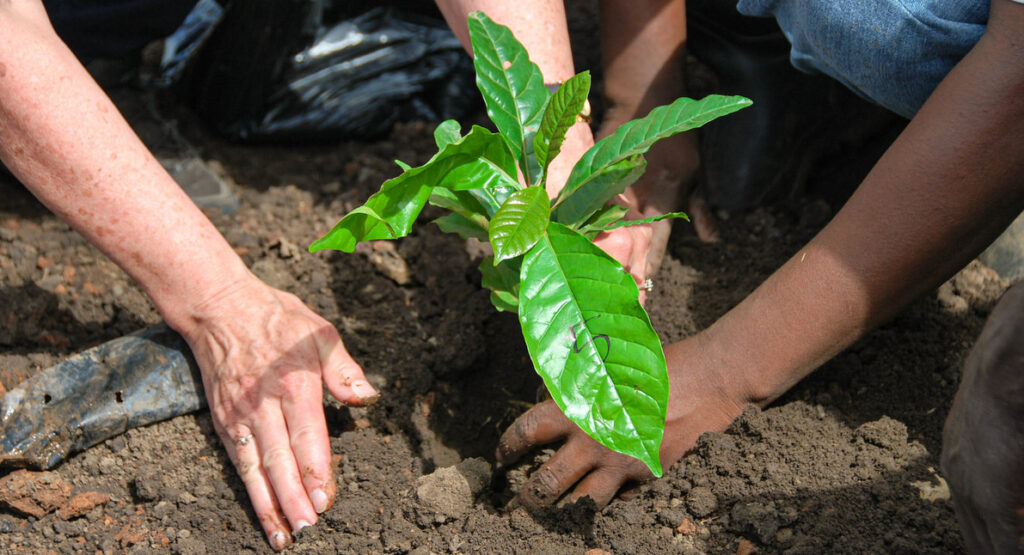
Now that c&c has entered its third phase of implementation, the motto is: “No more talking, let’s act!”. With more than 92,000 coffee farming households supported to date, c&c expects to reach an additional 80,000 families by 2024.
What happens in Phase III to protect coffee from climate change?
“Climate change is the greatest threat to the coffee industry”, says Stefan Ruge, Program Manager of c&c at HRNS. “If we want to drink coffee 30 years from now, we need to act today.”
The majority of coffee regions worldwide are suffering from rising temperatures, depleted soils and extreme weather conditions. This has strongly contributed to a reduced interest in coffee production, leading youth to migrate to urban centers in search of job opportunities.
A carbon neutral supply chain can mitigate the effects of climate change, while trainings of youth and women can strengthen smallholder farming families and motivate them to explore coffee cultivation as an economically viable livelihood activity. To pursue these goals, Phase III is divided into three areas:
1. INNOVATION
“As we are talking to NGOs, researchers and farmer organizations we are constantly identifying and evaluating new tools and knowledge about how to effectively deal with the effects of climate change”, Ruge says. Agronomists of c&c then test these tools and climate-smart practices in different regions to determine if the methods implemented in each territory are adequate to adapt and mitigate climate change. In Honduras, for example, smallholder families diversify their agricultural production systems with other cash crops such as avocado, lime and plantain. Benefits of diversifying their farm include improved food security, additional income, climate resilience and new opportunities in local markets for selling crops.
The key to promoting such innovative techniques in the field is youth. Young people are more open to digital solutions and innovation in general. In Central America c&c developed the program “climate pioneers”. Over the course of three years, young adults learn about climate change and how to cope with its effects on the ground. Back with their families, they are respected advisors and teach their families these new measures that would in the long run increase the output of their family farms. Furthermore, these trainings motivate a young generation of farmers to stay on their farms and continue the family business. A valuable impact in these times when young people often prefer to look for work in the cities rather than take on the hard labor on the farm under the even harder conditions of climate change.

2. Dissemination:
The results of c&c innovation are published in the c&c toolbox (link), an open online platform that compiles field-tested tools, case studies, guidelines, and training material. Using the toolbox, smallholder farmers and farming communities receive valuable information about improved and climate-smart farming techniques and practices free of charge. c&c also encourages the Training of Trainer approach in order to spread new knowledge as wide as possible among smallholder coffee farmers.
c&c has established so called Communities of Practice in all its program regions. Local actors, like agronomists, NGOs and politicians come together to exchange their experiences, needs and solutions concerning farming and climate change. These Communities of Practice are a valuable source of information for c&c members, since they offer first-hand information about the challenges their producers are facing, which solutions are available and how to support the farmers on the ground in order to protect our global supply chain. Members of c&c are invited to suggest their own methods that they want to see tested in the field.
3. Implementation:
One of c&c’s priorities is to find practical solutions for smallholder families. When the soil dries out and trees are dying, an irrigation system might be a solution, but which farmer could afford it? There is probably no money for an expensive irrigation system. The family could however, afford mulching material and learn about pruning instead. Solutions tailored to the needs and possibilities of each farmer family are also necessary since no farm is like the other. In Uganda, for example, one farm might suffer from drought while the next farm a few kilometers away is hit by hailstorms. “You need to seek solutions at the doorstep of each farm”, Ruge says. “We offer solutions, but each family needs to evaluate which techniques makes sense for their own farm.” Therefore, families are invited to demonstration plots to learn what their farm could look like. “We don’t tell them, what to do”, Ruge emphasizes, “we offer solutions and provide assistance so they can take informed decisions on what measures to adopt.”
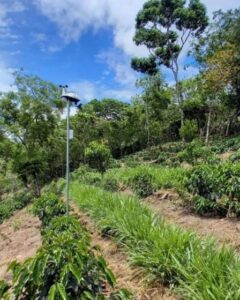
Not only smallholder coffee farmers profit from the work of c&c
Each player in the coffee industry who is up to date with the effects of climate change seeks to become carbon neutral. But no coffee company will achieve carbon neutrality just by looking at their own facilities and building more effective roasting plants, but only by supporting the establishment of carbon neutral coffee supply chains.
why become a member
Farmer organizations, trading and roasting companies, development agencies, NGOs and research institutes – anyone from private companies to public partners can join c&c. c&c offers different membership levels according to individual needs.
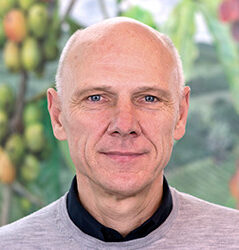
coffee&climate is all about mobilizing sustainable resources in order to secure our global supply chain for the decades to come.
In a pre-competitive partnership, all c&c members join forces and work together to implement concrete actions to enhance the resilience of coffee production systems. Everyone profits from c&c, from the farmers in the field to the traders and consumers.
how to become a member
Becoming a member is easy. Get in touch with us to find out about the different ways you can join the network! Don’t forget to subscribe to our newsletter to stay up-to date with our latest activities tackling climate change together.
“We need to understand that the pressure to act increases every day”, says Michael Opitz and mentions the recent IPCC report: “Global warming is likely to hit 1.5°C by 2030, much earlier than expected. We need to act now.”
